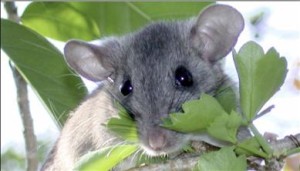One animal that comes readily to mind when you think of the term “laboratory animal” is the venerable rat, a rodent that is as ubiquitous as it is reviled. Not all rats are “guinea pigs” for the lab, however. Some are highly prized for their rarity, such as Florida’s Key Largo woodrat.

The Key Largo woodrat (Neotoma floridana smalli) is one of the most endangered rodents on Earth. It can be found only in tropical hammocks in Key Largo, Florida, according to the Florida Fish & Wildlife Conservation Commission (FWC).
The midsize rodent (12-16 inches long) is besieged by a wide range of threats. Citing the U.S. Fish & Wildlife Service, FWC says development on Key Largo has caused the thinning and destruction of vegetation in the hammocks. “Habitat fragmentation threatens the species by limiting gene flow and increasing risk from other threats. The limited range makes the Key Largo woodrat vulnerable to storms and fires. Sea level rise also threatens the species as their habitat would be inundated with ocean water. Other threats include increased predation by feral cats and competition from black rats.”
Known for its habit of building large stick houses, Key Largo woodrats depend heavily on the natural vegetation of the tropical hardwood hammocks to obtain material for constructing these houses, FWS says. “Although large portions of the remaining habitat are now in protection, there has been such a reduction in its total range and habitat that the future of this species remains in an endangered condition.” (Download a FWS PDF about the woodrat).
Source: National Geographic Photo Ark Spotlight: Key Largo Woodrat – National Geographic Society (blogs)
